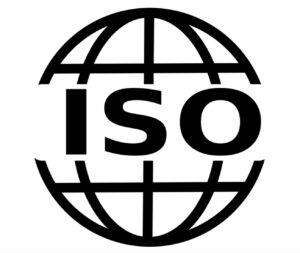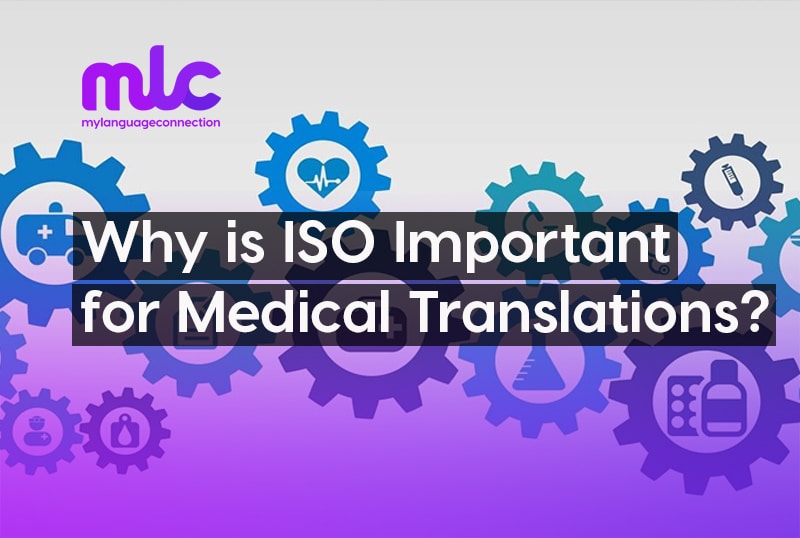Quality and consistency is a must in the field of medical translation. Getting ISO certified is important to ensure that medical documents and product labels are free of error and are delivered to the highest standards.
Medical translation is a specialised service that must adhere to the highest standards. Creating content for medical products and devices is highly regulated since any error or misinformation can lead to patient risk, such as harm or death. This applies to translating medical content to another language; it is imperative that the information is subject to the same set of standards.
If you choose to outsource your medical translation, make sure you choose ones that have been certified with the latest ISO standards. This is your guarantee that quality is ensured in every aspect of product documentation.
 What is ISO? A Quick History
What is ISO? A Quick History
Check and balance is crucial in the global market landscape. Without this, it is difficult to ascertain the acceptable standards of products and services. It is also important to have a global set of standards for all organisations to abide to ensure quality and consistency. The differing set of regulations across international borders make it even more difficult to have an understanding of requirements on a global scale.
ISO certification offers an even playing field for all businesses and organisations to strive for a level of standard and quality assurance. It is defined and established by the International Organisation of Standardisation (ISO), which is an independent and non-governmental organisation. It is responsible for defining, developing, and issuing certifications based on quality, efficacy, and safety of products, systems, and services.
There are various types of ISO certifications across different industries. They have been created to ensure a separate set of criteria for assessing quality and consistency based on the applicable industries. When the standards change, your processes and how you do things within your organisation can change along with it to maintain that standard.
As mentioned earlier, there are many different certifications that you can get. In fact, one organisation or business can obtain more than one ISO certification, as long as it is applicable to their industry or the type of products or services offered.
To give you an idea, here are the top 10 ISO certifications that are available and what they mean.
| Type of ISO Certification | Definition |
| ISO 9001 | This ISO certification was published in 1987 and is updated every 7 years. It outlines the steps to develop a Quality Management System (QMS) that enables an organisation to develop high-quality products and services. It also details top management processes and steps that enable continuous improvement. |
| ISO 14001 | This type of ISO certification covers multiple standards. It defines the framework of an Environmental Management System (EMS) that organisations must adhere to in order to protect and respond to the environment, while ensuring their operations do not negatively affect the environment. |
| ISO 27000 | This type of ISO certification is specifically concerned with information security management practices. It provides a global framework for the development and use of management-based systems and implementing a code of conduct. There are multiple standards under this family, so organisations can choose the certifications that best fit their needs. |
| ISO/TS 16949 | This is one of the oldest ISO certification standards and specifically addresses the automotive industry. TS literally means Technical Specification. This streamlines the process of setting standards for the manufacture of cars and auto-related products; from the development, production, and installation. |
| ISO 22000 | This type of ISO certification is concerned with the food safety management system. It provides the safety guidelines for food manufacturing, food transportation, and other systems involved with the food business such as restaurants, caterers, and food manufacturing companies. |
| ISO 50001 | This type of ISO certification is designed to outline the efficient use of energy for all organisations. It defines the framework that allows organisations to build a policy for energy use that improves energy usage, reduces energy cost, and lower global emissions. |
| ISO 13485 | This type of ISO certification is known as the medical equipment standard. Unlike other certifications listed here that cover multiple standards, this one is a single certification that was originally published in 2003 and was revised in 2016. It provides a global framework for the production of medical devices and equipment. It covers the design, production, installation, and delivery of medical devices to ensure effectiveness for its intended purpose and safety during use. |
| ISO 31000 | This type of ISO certification provides a risk management framework for the applicable organisations. This was established in 2009 in an effort to provide an international standard to minimise or eliminate risk for industries that are exposed to risks. At the same time, it provides guidelines that will help organisations identify threats and allocate resources to manage those risks. |
| ISO 26000 | This type of ISO certification was published in 2010 and is concerned with ensuring the social responsibility of organisations. It outlines the guidelines that contribute to the sustainable development of any organisation and making sure that they uphold their social responsibilities at every step of their operations. |
| ISO 20121 | This type of ISO certification provides the global framework for event management to ensure sustainability of any event-related activity. It identifies the potential source of negative economic and environmental impact resulting from such activities and suggests ways to mitigate them. |
How ISO Standards Relate to the Translation Industry
Standardisation is not properly regulated in the language services industry, including translation (particularly in the field of medical translation). And yet, patient and consumer safety is paramount in this field.
ISO standards mitigate any risks that are prevalent when the information on the use and application of medical devices, products, and tools are critical. It is vital that the translation retains the efficacy of communication in terms of the guidelines of use, proper dosage, settings, exposure, and so on, for a particular medical device or product. Without this standardisation procedure, the manufacturer of a product could be facing major lawsuits and liabilities. It is also part of the manufacturer’s ethical responsibility to its consumers and patients.
ISO defines the guidelines for what is considered high-quality translations. In this case, the medical translation must be complete, accurate, and unambiguous. When there is ambiguity, it puts patients’ lives at risk as a direct result of the wrong information provided from the translation.
Another reason why ISO standards are relevant to the translation industry is in terms of the traceability. It is important for translation service providers to be able to ensure accountability when something goes wrong. In the event of an error, they must be able to identify the cause of the error; specifically, they must determine who, when, and what caused the error.
Translation, just like the medical industry, is a human-driven process. This leaves a lot of room for human error to happen. ISO certifications and standardisations are a step taken to ascertain where errors could occur and how to prevent them from happening. Any data that is derived from this process will inform the translation provider about how to prevent and correct these errors in the future.
ISO – Language that Overcomes Barriers
 We live in a highly globalised world wherein goods and services are exchanged and traded internationally. But when you are engaging clients and providing services on a global scale, it becomes difficult to set a standard or a mutual understanding of requirements. What is considered as high quality in one part of the world might be considered a mediocrity in another. Even legislation in different regions or cities from the same country can vary significantly!
We live in a highly globalised world wherein goods and services are exchanged and traded internationally. But when you are engaging clients and providing services on a global scale, it becomes difficult to set a standard or a mutual understanding of requirements. What is considered as high quality in one part of the world might be considered a mediocrity in another. Even legislation in different regions or cities from the same country can vary significantly!
In this case, ISO becomes the standard that transcends international language and national borders. It becomes the “common language” that overcomes barriers. It becomes the mutual understanding of regulations for businesses across all industries. It encompasses various aspects of compliance such as quality, data security, health and safety, and environmental protection.
This is not an easy feat considering that each industry has their own jargon. However, overcoming this barrier of language through ISO certification offers many rewards such as boosting efficiency, consistent quality, and greater customer satisfaction.
Is ISO Mandatory?
No, obtaining ISO certification is voluntary. There is no legal requirement for any business, including medical translators, to obtain this certification.
Even though this isn’t a requirement to operate, businesses across all industries must strive to obtain one. This certification does not replace national laws. However, ISO standards have international reach that can serve as a significant benchmark of quality in the field of medical translation. This is an important guideline for setting quality in an industry such as the language services and translation, which lacks proper regulation.
ISO standards are not only voluntary but the process of earning certification is time-consuming and expensive. This is why many businesses and service providers opt not to obtain one. On the contrary, those companies and translation service providers that seek one deliver a commitment towards their clients of providing first-rate services. It reflects the value that their services bring as far as medical translation is concerned.
Importance of ISO in Medical Translation
The implementation of ISO standards in the medical translation industry typically applies to two areas: 1) control of outsourcing services and 2) labelling of medical products.
Quality Control for Outsourced Processing
There is a specific type of ISO certification that is intended for translation service providers. This certificate outlines the essential processes and various stringent guidelines that service providers must live up to. Only through the compliance of these quality control requirements is a translation service able to guarantee deliverance of high-quality content.
When outsourcing the medical translation, proper controls must be set in place. These controls must be directly proportional to the risks involved. You can have internal guidelines to ensure conformity of these outsourced processes. However, a vendor that is ISO-certified is the best way to ensure that all necessary controls for quality management are set in place and are adhered to.
Product Labelling
Prior to the use of a medical device or product, consumers refer to the product label that comes with each product. The label contains information such as the technical description of the product, instructions on how to use, intended purpose of the product, contraindications or warning for use, etc.
With this in mind, it is crucial that the product labelling must be accurately and completely translated following the highest standards. The translated content must be focused on patient safety and increasing the effectiveness of the use of the product.
When translating product label information, it must observe strict quality assurance processes. Regular and different levels of quality assurance checks must also be performed to ensure that no critical information is lost during the translation.
What Does the ISO Certification Mean for Your Translation Partner?
Is your translation partner ISO-certified? Given the information above, it should open your eyes to the value and importance of proper ISO certification when working with or outsourcing your medical translation needs.
All providers of medical translation services can claim that they offer the highest quality translation services. However, anyone can make that claim, especially in an industry that is not highly regulated. When a translation provider obtains ISO certification, it reflects their commitment to adhere to standards that are recognised globally. It also gives you assurance that they observe the best practices in terms of their translation services based on the framework for quality management processes as outlined by the ISO, or the International Organisation for Standardisation.
Here are some of the quality management principles that an ISO-certified translation service provider has to offer:
-
- Process – An ISO-certified medical translator employs processes that are designed to increase efficiency and to seek out ways to improve results of the translation work.
- Systematic – The processes employed by a medical translator above are part of a vast system of quality management that mitigates risk, ensures quality control, and promotes completeness and accuracy.
- Performance Review – The validity period of ISO certifications is 3 years. As the organisations apply for a new certification, it also provides them with the opportunity to reassess existing processes and systems to ensure that they are up-to-date with the global standards of quality and performance.
- Transparency – ISO-certified medical translators keep comprehensive records of all essential documents and processes. This increases the traceability in the event of errors that need to be addressed and corrected.
- Customer-Centric – The best medical translators that have complied with ISO standards are focused on the needs of the customers. They do not just translate documents; rather, they understand the purpose of the documents and keep the customers’ needs in mind.
If you want to reduce the risk of liability to patients and consumers who are going to use your medical documents and manuals, you must give priority to choosing the best and highest-quality medical translators. The ISO certification is what will help differentiate the good translators from the best ones.
But like most types of partnerships, there is one essential component for success with building a relationship with your medical translator: trust. A translator that has committed itself to getting certification and expressing their commitment to the highest standards earns the trust of its partners. You trust them to live by their promise of high-quality service and to demonstrate their capabilities through the service they offer.

